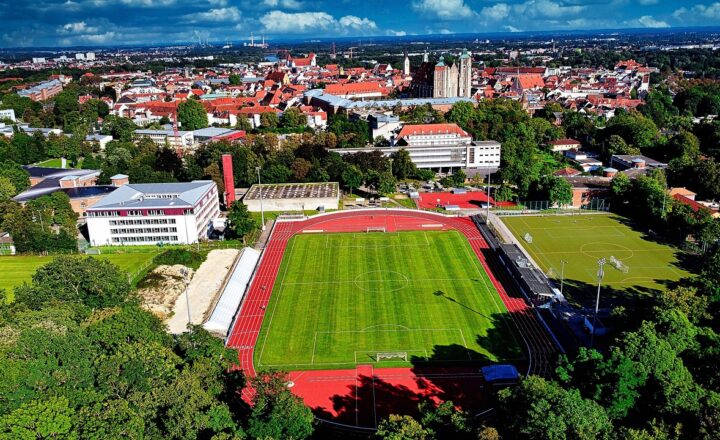
Nostalgia—a wistful longing for the past—has been a cultural phenomenon that transcends generations. In an ever-evolving world marked by rapid technological advancements and societal changes, it may seem perplexing that we frequently find comfort in memories of yesteryear. However, this emotional response has deeper roots, connecting us to our identities, guiding our interactions, and influencing cultural trends.
—
1. Understanding Nostalgia
Nostalgia is characterized by a sentimental yearning for past experiences, often idealized and reconstructed in our minds. Psychological studies suggest that nostalgia provides a range of emotional benefits, including greater psychological resilience, improved mood, and enhanced self-esteem.
Research indicates that nostalgia acts as a coping mechanism, allowing individuals to create a positive emotional refuge when faced with stress or uncertainty. When people reflect on cherished memories, they are often met with feelings of warmth and security, reigniting connections to family, friends, or significant life events.
It’s essential to recognize that nostalgia isn’t merely a longing for the past; it represents a complex interplay of individual memories that shape our identity and sense of belonging.
—
2. The Psychological Benefits of Nostalgia
Nostalgia serves as more than a simple remembrance; it is a powerful psychological tool that enables individuals to explore their identities and counter feelings of loneliness or isolation. The benefits of nostalgia include:
- Emotional Regulation: Nostalgia can help alleviate negative emotions, providing a comforting refuge during challenging times. By reminiscing about pleasant past experiences, individuals can enhance their mood and combat feelings of anxiety or sadness.
- Connection to Others: Nostalgia often highlights shared experiences, fostering feelings of connection and togetherness, especially among family members and friends. It’s common to bond over shared childhood experiences, music, or cultural events.
- A Sense of Continuity: In a rapidly changing world, nostalgia offers a sense of stability and continuity, reminding us of who we are and where we come from.
Psychologists suggest that nostalgia can reduce feelings of existential dread, offering a way to align one’s present self with past experiences and memories.
—
3. Nostalgia in Popular Culture
The growing fascination with nostalgia has seeped into popular culture, dramatically influencing music, film, fashion, and even social media. From reboots of beloved TV shows to the resurgence of vintage fashion, the search for nostalgia is reshaping various cultural landscapes.
- Television and Film: The entertainment industry has embraced nostalgia with several reboots and sequels to iconic shows and movies from the late 20th century. These remakes often capitalize on our emotional connections to characters and stories, feeding our nostalgia for simpler times.
- Music: Artists frequently reference or sample music from past decades, tapping into collective memories and encouraging listeners to reflect on their personal histories related to those songs. Nostalgic themes can also be found in lyrics that evoke a sense of longing or reminiscence.
- Fashion: Trends from past decades are resurfacing on runways and retailers’ shelves. Whether it’s 90s grunge or 70s boho, fashion is intertwined with nostalgia as styles reinvent themselves for modern consumers seeking connections to their roots.
As individuals seek comfort in familiarities, the cultural landscape will likely continue to embrace nostalgic elements, creating a sense of warmth and joy.
—
4. Digital Nostalgia: The Role of Technology
Digital technology has transformed how we experience nostalgia. Social media platforms enable people to share memories, reconnect with childhood friends, and engage with others around shared experiences. Platforms like Facebook and Instagram often feature nostalgic content, sparking online discussions about the past.
Additionally, streaming services provide access to nostalgic movies, television shows, and music, allowing individuals to curate their own nostalgic experiences on demand. The advent of virtual reality (VR) also presents new opportunities to explore nostalgic moments, offering immersive experiences that allow users to relive past events.
—
5. The Future of Nostalgia
What does the future hold for our collective nostalgia? As we continue to navigate the complexities of modern life, the desire for nostalgic experiences is unlikely to fade. Nostalgia may evolve, merging with new cultural phenomena, shaping our identities and values for generations to come.
Future generations could look back on today’s cultural moments, creating their own sense of nostalgia for the music, fashion, and events that define their youth. Moreover, as technological innovation propels us forward, the allure of nostalgia may deepen, encouraging us to seek familiarity in the face of rampant change.
Nostalgia remains a window into our past, offering a rich tapestry of experiences, emotions, and memories that can shape our cultures and identities. It serves not only as a refuge but also as a source of inspiration, reminding us of where we came from as we continue to evolve and grow within an ever-changing landscape.
—
Conclusion
Nostalgia is more than just a mere longing for the past; it encapsulates our shared human experiences and emotional connections. As we seek solace in memories and forge relationships with those around us, nostalgia enriches our lives, shaping cultures and individual identities. As we move forward, the influence of nostalgia will undoubtedly continue to resonate, connecting us to our roots even as we embrace the future.








